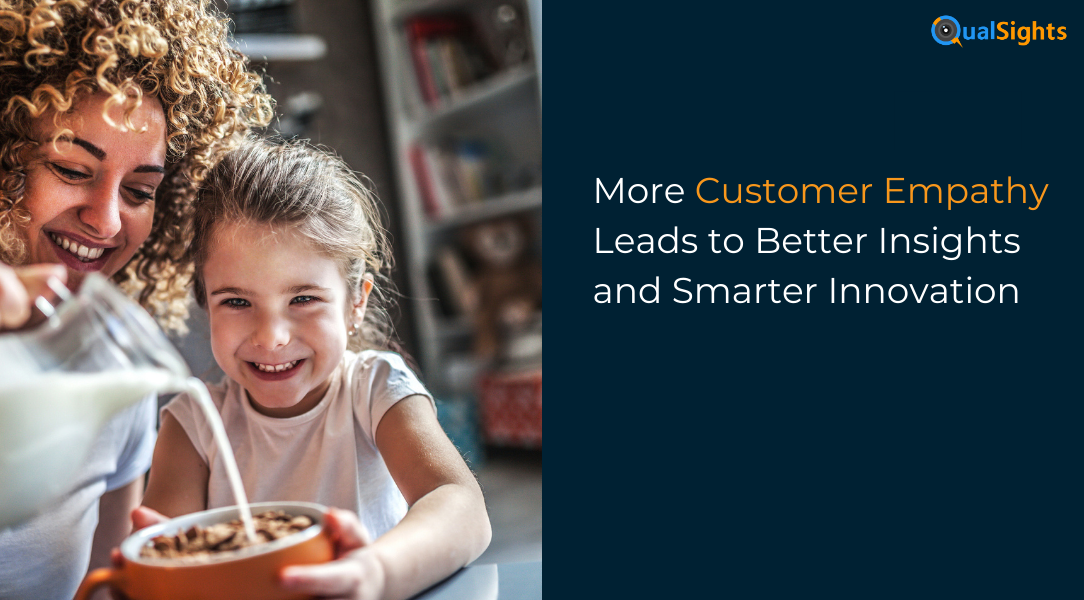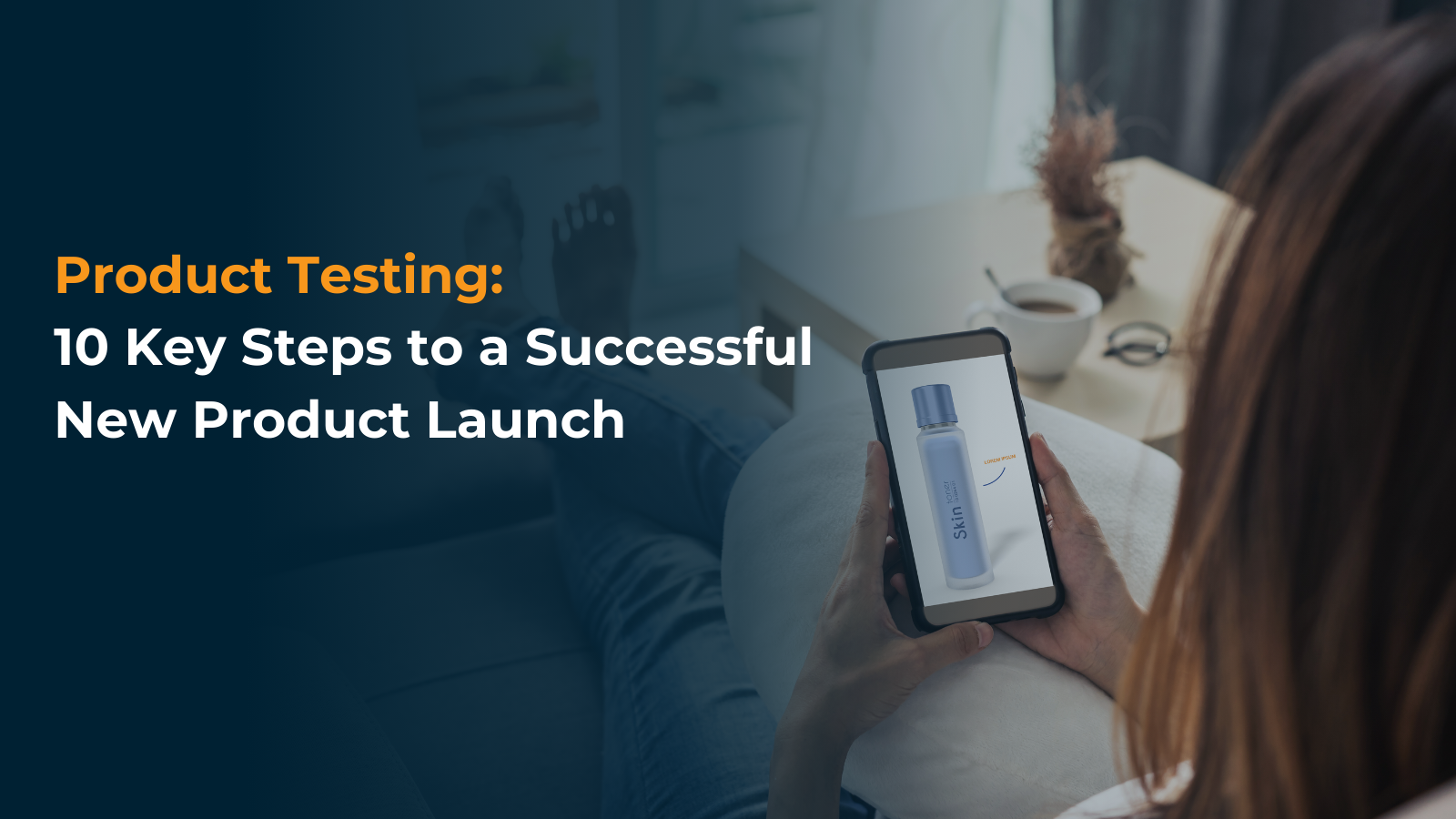More Customer Empathy Leads to Better Insights and Smarter Innovation

In the words of Sheryl Crow, a change would do you good.
But for companies that make consumer products, how can you ensure that the changes you make are, in fact, good? How can you keep innovating while always moving in the direction of better?
There’s one clear way to make your innovation program more focused, purposeful, and smarter: by developing consumer empathy. The more you can understand your customers, the deeper and more nuanced the insights you’ll gain access to, and the more accurate your innovation can be.
Best of all, when you truly engage with customers and demonstrate your empathy by consistently meeting their needs, you won’t just improve your innovation. You’ll also improve the customer experience.
Let’s consider where innovation goes wrong and how empathy can help companies end the vicious cycle of failed or lackluster innovations. We’ll then wrap up with a few quick tips on using market research to build consumer empathy.
The Struggle to Innovate in Familiar Consumer Product Categories
Smart, forward-focused innovation is a hard line to walk for any company, but with familiar and largely saturated CPG categories, it’s nearly impossible. If you’re making heavily used and dependable products like household cleaners, beauty and self-care products, or everyday kid-friendly snacks, you’re facing a gauntlet: customers would welcome something better, but they don’t necessarily want something different. There’s a reason these products have become tried-and-true solutions!
Many companies go wrong by settling for assumptions or generalizations about who their customers are and what they need. The less they know, the less targeted their innovation efforts are, which makes it harder to meet or exceed customer expectations. When companies do. n’t understand or care about their consumers, the consumers know it. Everyone gets stuck in a vicious cycle of poor communication and unmet needs.
In fact, when companies innovate poorly, they don’t just fail to improve — they actively drive customers away. That’s not speculation; it’s what customers are reporting. According to the 2024 Customer Experience Index, after three years in a row of declining customer experiences, customers are now reporting the lowest quality of customer experience in almost a decade.
What can you do to break the cycle and innovate in the right direction?
How to Improve Customer Experience With Empathy Research
When you emphasize empathy, you can empathize effectively (try saying that three times fast).
Developing empathy starts with listening closely to your customers, relating to the challenges they face and the pressures they feel. As you build your sense of consumer empathy, you’ll gain more meaningful insights into what people are struggling with. That points to the changes they need or want to see — and that knowledge empowers you to enhance empathy, discover new opportunities and uncharted areas for innovation that drive your brand forward.
Smarter innovation is about genuinely improving consumer products, not just randomly tweaking them to reflect trends. Think “let’s make our shampoo bottle easier to dispense” instead of “let’s try pumpkin-spice scented shampoo since that flavor is well liked in food and drinks!”
If you’re committed to making better products, you need to understand how your consumers use and perceive your products, and yes, this includes uncovering their pain points and unmet needs with empathy research. When you create products that meet true consumer needs, you wind up with happier customers who feel heard, understood, and appreciated. As people have better customer experiences with your brand, you’re able to uncover even more helpful and focused input when conducting research among your brand buyers. That, in turn, helps you understand them better and empathize with their needs more, driving the cycle into another rotation.
Empathy doesn’t just enable smarter innovation and improve customer experience; it also leads to higher sales, greater revenue, improved customer loyalty and retention, and less wasted money and effort on failed innovations.
So, where do you start?
3 Ways to Build Consumer Empathy With Market Research
These tips will help you design a market research approach that is rooted in customer empathy.
- Prioritize qualitative research. Unless you’re a mind reader, the best path towards empathizing with customers is to ask them how they feel. Surveys are fast and easy, but they’re also limited in the level of information you can collect. To understand the emotions and motivations behind product usage, look for ways to connect with customers where they usually use your products: at home. Use open-ended questions to establish a free-flowing conversation and a video-based platform that lets you pick up on body language and other subtle nuances.
- Supplement qualitative feedback with accurate, reliable quantitative data. There’s one drawback to qualitative market research: consumers aren’t always aware of exactly what they’re doing, especially when it comes to routine, habitual behaviors. That’s why we recommend that companies reinforce their qualitative studies with hard numbers from new technologies. This data will show you how often study participants are reaching for your window cleaner and how much they’re using at a time, so you won’t have to rely on subjective measures like “a few times a week” or “a few spritzes.”
- Trust the process. Yes, your goal is to innovate wisely, but especially at the beginning, the wisest approach is to look for small changes that consumers appreciate (like that less slippery shampoo bottle). Over time, those changes compound, creating a product that outshines the competition.
Customer Empathy Unlocks the Virtuous Cycle of Innovation
Ready to create the kind of change that would do you — and your customers — good? Empathy is the key to cultivating customer loyalty. When you listen to and empathize with your customers, they’ll tell you what they need: no guessing necessary on your part.
QualSights offers tools that can help you connect with your customers on a deep level and make decisions backed by reliable data. Our user-friendly client platform provides up-close-and-personal access to real people as they use products in their daily lives, so you can ask what they’re thinking and feeling at any moment as they use your products. And our innovative Smart Sensors provide passive, accurate quantitative data that helps you put those perceptions in context and understand your customers better than they understand themselves.
Contact us today to learn more.
 Consumer Empathy
Consumer Empathy 

